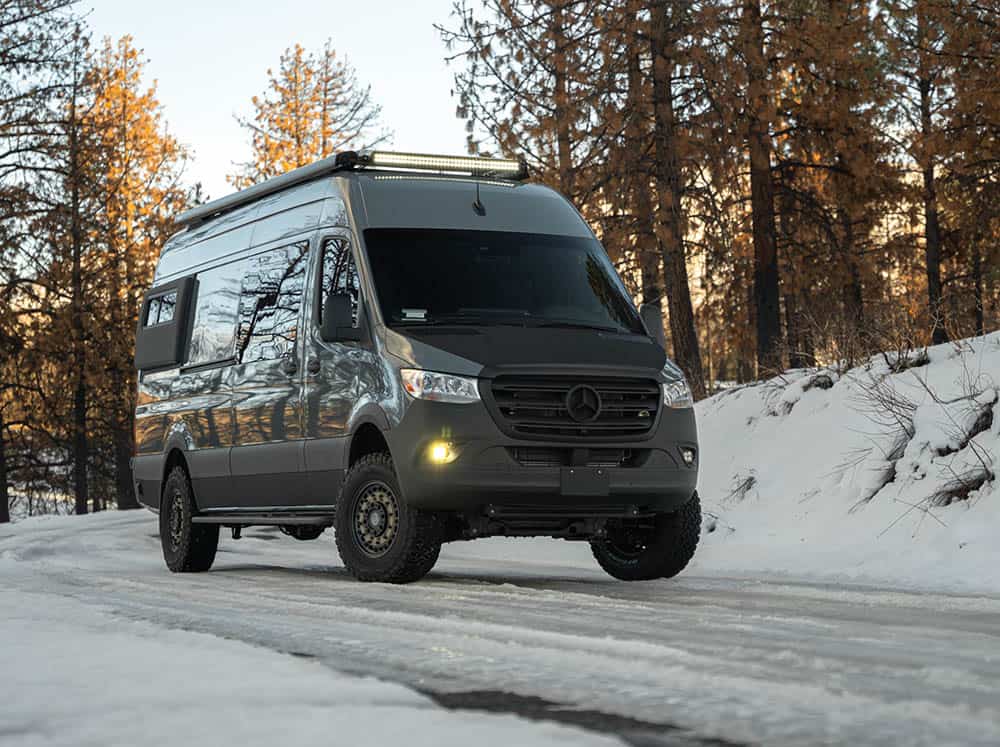
## Campervan/RV Real-World Parts Directory
by Fan-Tastic Vent

by Fan-Tastic Vent
### Roof Rack Product Name: Low Pro Roof Rack Modular, lowprofile design 80/20 aluminum crossbars for easy solar/accessory mounting Aerodynamic, lightweight (~64 lbs) Description: The Low Pro Roof Rack is a popular, modular, and aerodynamic solution for campervans, designed for easy mounting of solar panels, awnings, and other accessories while minimizing roof height and weight[2][9]. ### Solar Mount Product Name: DSLR Roof Rack Solar Panel Mounting Brackets Fits most 60cell/72cell solar panels Adjustable tilt angle Corrosionresistant anodized aluminum Description: These brackets provide a simple, adjustable solution for mounting solar panels onto flat van roof racks, offering corrosion resistance and easy adjustability for optimal sun angle[Rich Solar site]. ### Antenna Product Name: Winegard RoadPro 360+ Omnidirectional digital HDTV antenna No rotation required Compact and lowprofile Description: The RoadPro 360+ is a compact, omnidirectional digital TV antenna for RVs, offering strong signal reception without the need for manual aiming or rotation[Winegard site]. ### Vent Cover Product Name: Maxxair 0004500K MaxxFan Roof Vent Cover Fits 7" x 14" standard roof vents Durable ABS plastic construction ### Skylight Product Name: FanTastic Vent 7350 Smoke with Cover & Fan 14" x 14" opening size Smoketinted lid for diffused lighting 3speed reversible fan Rain sensor and remote control options Description: The 7350 is a versatile, smoketinted roof vent with fan, offering ventilation, natural light, and optional remote/rain sensor features for campervans and RVs[FanTastic Vent site].
Van Compatibility: Universal (fits standard 14" x 14" roof openings in most Sprinter/Transit/ProMaster vans)
The Fan-Tastic Vent RV Roof Vent is an industry-leading choice for campervan and RV conversions due to its exceptional airflow, quiet operation, and robust range of smart features. Its versatile lineup, including models like the 7350, 2250, and 1250, offers tailored solutions for both casual and full-time van life[1][2][5].
In summary, Fan-Tastic Vent represents a smart investment for campervan and RV conversions, with models to suit any budget or lifestyle. Prioritize airflow, automation, and weather protection features for the best results.
Comparing Campervan/RV parts involves examining similar products in categories like sewer hoses, which are crucial for maintaining hygiene and comfort in RVs. Here, we'll focus on Camco RhinoFLEX 15′ Camper Sewer Hose Kit and provide alternative products with similar functions.
This kit is another offering from Camco, known for its durability and flexibility. It includes two 10′ hoses with bayonet fittings and a 4-in-1 adapter, making it versatile for different dump station configurations.
Price Range: Typically priced between $100-$150.
This kit is designed for easy connection and disconnection, using a patented coupler system that minimizes spillage.
Price Range: Generally around $50-$100.
A more affordable option with a focus on ease of use and decent durability.
Price Range: Typically priced between $30-$70.
Known for its durability and ease of use, this kit includes a 10′ hose with fittings.
Price Range: Often priced between $70-$120.
Ultimately, the choice depends on whether you prioritize flexibility, durability, or ease of use. Each product caters to different needs, making it essential to consider your specific requirements for van life adventures.
Tools Required
- Screwdrivers (both Phillips and flathead)
- Socket set or wrench set
- Cordless drill with bits
- Wire strippers/crimpers
- Multimeter
- Flashlight
- Tape measure
- Pen/pencil & notepad (for labeling parts/locations)
- Protective gloves and eyewear for safety
Prerequisites
- Ensure the van is parked safely on level ground with the parking brake engaged.
- Disconnect all power sources (unplug shore power, switch off battery disconnect).
- Review the layout/manuals for your vehicle and parts (obtain diagrams if possible)[3].
- Gather all parts required for the specific directory section you are installing (water, electrical, etc.).
Step-by-Step Instructions
1. Plan Your Install:
- Review the parts directory and determine the placement for each component using vehicle diagrams or the owner’s manual[3][7].
- Lay out tools and parts for easy access.
Prepare the Work Area:
- Clear the target area of debris and obstructions.
- Pre-fit components to ensure compatibility and sufficient space[6].
Install Components:
- For mechanical parts: Attach using appropriate fasteners (screws/bolts). Check for level alignment before tightening fully.
- For electrical parts: Strip wires, crimp/solder connections, and use a multimeter to test for correct polarity before finalizing connections[2].
- For plumbing parts: Secure tanks, fasten fittings, and check for leaks using a pressure test or water run-through[5].
Secure and Test:
- Tighten all hardware once fitting is verified.
- Restore power or water gradually and monitor for issues (leaks, loose connections, faulty components).
- Label new parts or connections for maintenance reference[1].
Common Mistakes
- Rushing layout planning—results in poor fit or function.
- Over-tightening screws/bolts, risking cracks or stripped threads.
- Failing to check for compatibility with existing systems.
- Not disconnecting power before electrical work—risk of shock[1].
- Skipping leak or continuity tests before use[5].
- Using wrong lubricant on hinges/locks (wet lube attracts dust; use dry lube)[1].
Pro Tips
- Use dry lubricant for locks and hinges to prevent attracting dirt[1].
- Label all wires and parts locations during installation for future troubleshooting.
- Always consult the latest manuals and diagrams for your specific RV model[3].
- Keep a maintenance checklist to catch loose connections or leaks early[1].
Time Estimate
- Simple component install (lock, hinge, detector): 30–60 minutes
- Moderate system install (small water/electric component): 2–4 hours
- Major system upgrade: 1–2 full days depending on system complexity[2][5].
Prioritize safety at each stage—using protective equipment and double-checking all connections before restoring utilities.